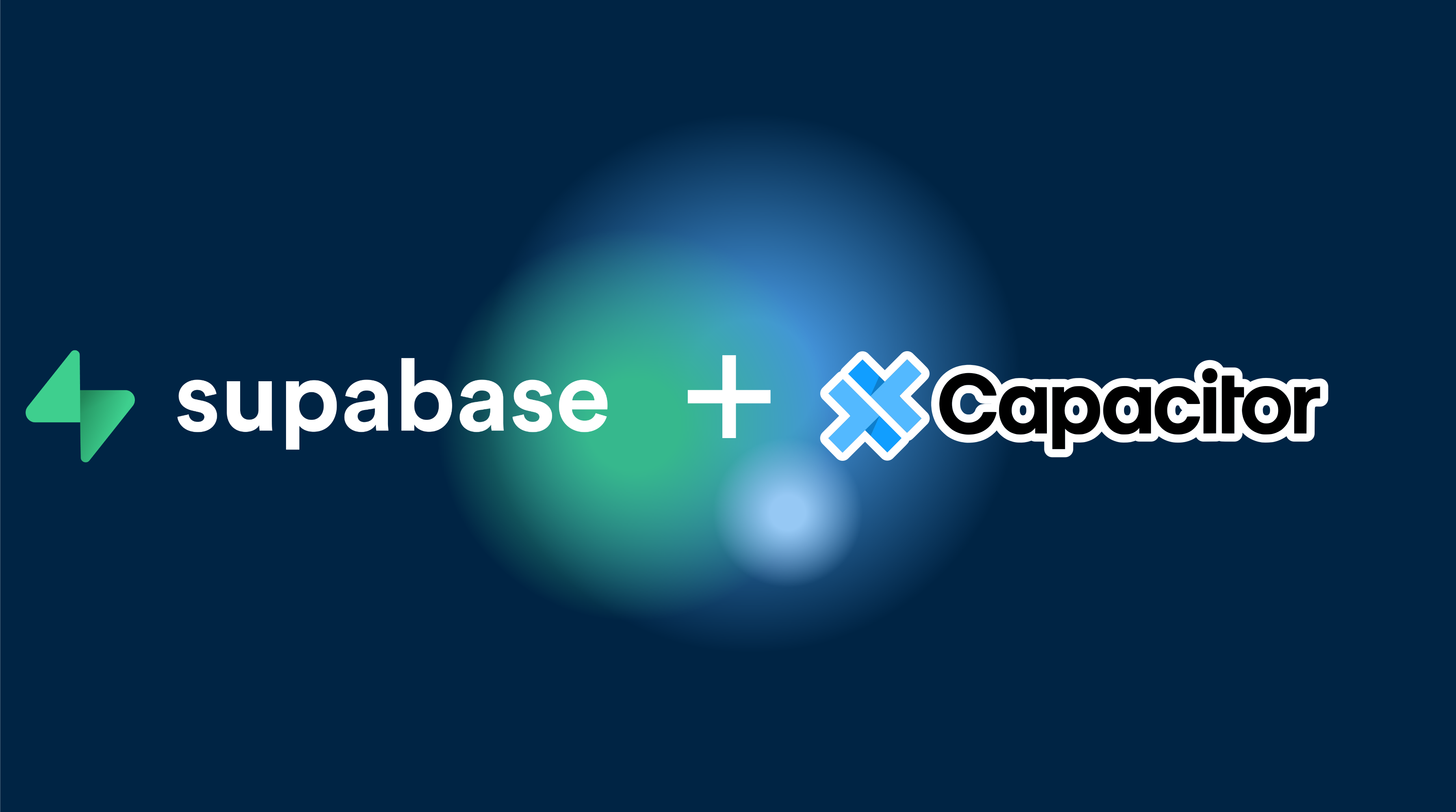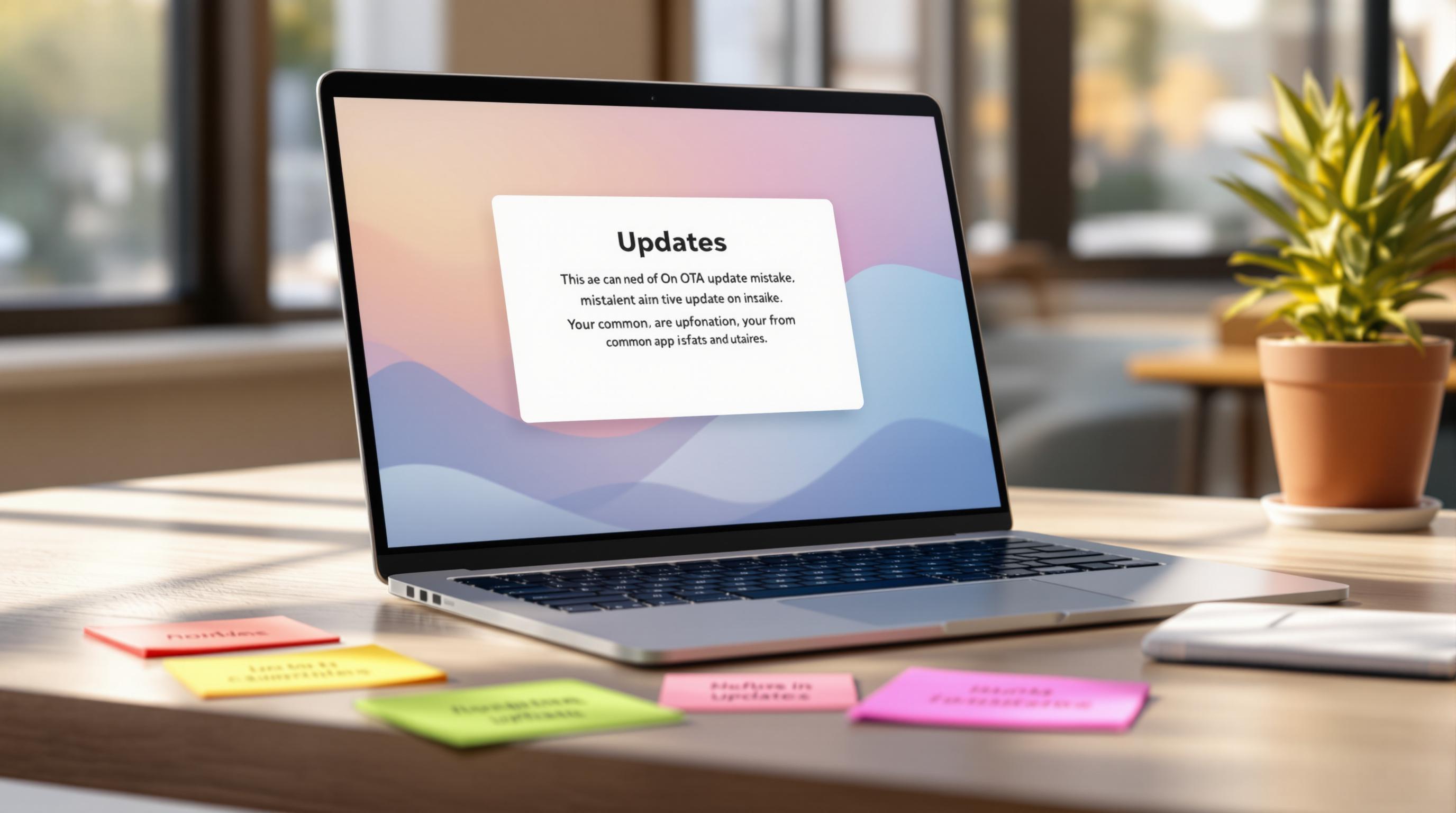Setting up authentication in mobile apps can be complex, but combining Supabase with the Capgo Social Login plugin makes it straightforward. This tutorial will guide you through integrating social authentication (Google, Apple, Facebook) with Supabase in your Capacitor app.
Why Use Supabase with Social Login?
Supabase provides a robust backend-as-a-service with built-in authentication, while the @capgo/capacitor-social-login plugin offers native social authentication across iOS, Android, and web platforms. Together, they provide:
- Seamless social authentication
- Secure token management
- Cross-platform compatibility
- Real-time database integration
- Built-in user management
Prerequisites
Before starting, ensure you have:
- A Capacitor project set up
- A Supabase account and project
- Developer accounts for your chosen social providers (Google, Apple, Facebook)
Step 1: Install and Configure the Social Login Plugin
First, install the Capgo Social Login plugin:
npm install @capgo/capacitor-social-loginnpx cap syncStep 2: Setup Supabase Project
Create and Configure Your Supabase Project
-
Create a Supabase project:
- Go to supabase.com and sign up/sign in
- Click “New Project”
- Choose your organization
- Enter a Project Name (e.g., “MyApp Auth”)
- Set a Database Password (save this securely)
- Select your Region (choose closest to your users)
- Click “Create new project”
-
Get your project credentials:
- Once created, go to Settings > API
- Copy your Project URL (e.g.,
https://your-project-ref.supabase.co) - Copy your anon public API key
- Save these for later use in your app
Configure Authentication Settings
-
Setup general authentication settings:
- Go to Authentication > Settings
- Under General settings:
- Set Site URL to your app’s URL (e.g.,
https://yourdomain.comorhttp://localhost:3000for development) - Add additional Redirect URLs if needed:
http://localhost:3000https://yourdomain.comcapacitor://localhost (for mobile apps)
- Set Site URL to your app’s URL (e.g.,
-
Configure email settings (optional but recommended):
- Under SMTP Settings, configure your email provider
- This enables email confirmations and password resets
- For development, you can use the built-in email service
Enable Social Authentication Providers
- Access the providers section:
- Go to Authentication > Providers in your Supabase dashboard
- You’ll see a list of available social providers
- Each provider has an Enable toggle and configuration options
Now let’s configure each social provider in detail:
Step 3: Configure Social Providers in Supabase
Setting up Google Authentication in Supabase
First, get your Google OAuth credentials:
Follow our comprehensive Google setup guide: Google Authentication Setup
This guide covers:
- Creating a Google Cloud Project
- Setting up OAuth 2.0 credentials for web, iOS, and Android
- Configuring the consent screen
- Getting the required Client IDs and secrets
After completing the Google setup, configure it in Supabase:
- Enable Google provider in Supabase:
- In your Supabase dashboard, go to Authentication > Providers
- Find Google and toggle it ON
- Fill in the configuration:
- Client ID: Your Google OAuth Web Client ID (from the Google Cloud Console)
- Client Secret: Your Google OAuth Web Client Secret
- Redirect URL:
https://your-project-ref.supabase.co/auth/v1/callback(auto-filled)
- Click “Save”
Important: Use the Web Client ID and Web Client Secret in Supabase, even if you’re building a mobile app. The mobile client IDs are used separately in the plugin configuration.
Setting up Apple Authentication in Supabase
Get Apple credentials:
Follow our detailed Apple setup guide: Apple Authentication Setup
This guide covers:
- Setting up your Apple Developer account
- Creating App IDs and Service IDs
- Configuring Sign in with Apple capability
- Generating the required private keys
- Platform-specific setup for iOS, Android, and Web
After completing the Apple setup, configure it in Supabase:
- Enable Apple provider in Supabase:
- Go to Authentication > Providers and toggle Apple ON
- Fill in the configuration:
- Client ID: Your Service ID identifier (e.g.,
com.yourapp.signin) - Client Secret: Generate this JWT using your Apple private key (see Supabase Apple docs for the JWT format)
- Redirect URL:
https://your-project-ref.supabase.co/auth/v1/callback(auto-filled)
- Client ID: Your Service ID identifier (e.g.,
- Click “Save”
Note: Apple authentication setup is the most complex due to Apple’s requirements for Service IDs, private keys, and JWT generation. Follow our documentation carefully for each platform.
Setting up Facebook Authentication in Supabase
Get Facebook credentials:
Follow our complete Facebook setup guide: Facebook Authentication Setup
This guide covers:
- Creating a Facebook Developer account and app
- Adding the Facebook Login product
- Configuring OAuth redirect URIs
- Getting your App ID, App Secret, and Client Token
- Platform-specific configuration for iOS and Android
After completing the Facebook setup, configure it in Supabase:
- Enable Facebook provider in Supabase:
- Go to Authentication > Providers and toggle Facebook ON
- Fill in the configuration:
- Client ID: Your Facebook App ID
- Client Secret: Your Facebook App Secret
- Redirect URL:
https://your-project-ref.supabase.co/auth/v1/callback(auto-filled)
- Click “Save”
Important: Make sure to add the Supabase callback URL (https://your-project-ref.supabase.co/auth/v1/callback) to your Facebook app’s Valid OAuth Redirect URIs in the Facebook Login settings.
Important Supabase Configuration Notes
Row Level Security (RLS):
- After setting up authentication, enable RLS on your tables
- Go to Database > Tables and toggle Enable RLS for each table
- Create policies to control data access based on authenticated users
User Management:
- View authenticated users in Authentication > Users
- Monitor authentication events in Authentication > Logs
- Set up email templates in Authentication > Email Templates
Testing the Configuration:
- Use Supabase’s built-in authentication test tool
- Go to Authentication > Users and click “Invite user” to test email flows
- Check the Logs section for any authentication errors
Step 4: Configure the Social Login Plugin
Now that Supabase is configured, you need to set up the Social Login plugin with the corresponding credentials. Important: The plugin needs the OAuth credentials from the original providers (not from Supabase), while Supabase handles the server-side authentication.
How the Authentication Flow Works
Before diving into configuration, understand the flow:
- Plugin authenticates with the social provider (Google/Apple/Facebook) natively
- Plugin receives tokens (access token, ID token) from the provider
- Your app sends these tokens to Supabase using
signInWithIdToken() - Supabase validates the tokens with the provider and creates a user session
- Supabase returns its own JWT token for your app’s authenticated requests
Google Plugin Configuration
The plugin needs your Web Client ID for all platforms and optionally an iOS Client ID for iOS-specific features:
import { SocialLogin } from '@capgo/capacitor-social-login';
await SocialLogin.initialize({ google: { // Use the same Web Client ID you configured in Supabase webClientId: 'YOUR_WEB_CLIENT_ID.apps.googleusercontent.com',
// Optional: iOS Client ID for iOS-specific features iOSClientId: 'YOUR_IOS_CLIENT_ID.apps.googleusercontent.com',
// Optional: Request offline access for refresh tokens mode: 'offline' }});Key points for Google:
- Use the Web Client ID (not Android/iOS client IDs) for the
webClientIdfield - The plugin will work on all platforms with just the Web Client ID
- The
iOSClientIdis optional and only used for iOS-specific Google features
Apple Plugin Configuration
Apple configuration differs between iOS and Android:
For iOS (native Apple Sign-In):
await SocialLogin.initialize({ apple: { // No additional configuration needed for iOS // The plugin uses the native Apple Sign-In capability }});For Android/Web (requires Service ID):
await SocialLogin.initialize({ apple: { clientId: 'YOUR_SERVICE_ID', // The Service ID from Apple Developer Portal redirectUrl: 'https://your-project-ref.supabase.co/auth/v1/callback' }});Key points for Apple:
- iOS uses native Sign in with Apple (no extra config needed)
- Android/Web requires the Service ID you created in Apple Developer Portal
- The
redirectUrlshould match what you configured in both Apple Developer Portal and Supabase
Facebook Plugin Configuration
Facebook requires your App ID and Client Token:
await SocialLogin.initialize({ facebook: { appId: 'YOUR_FACEBOOK_APP_ID', // From Facebook Developer Dashboard clientToken: 'YOUR_FACEBOOK_CLIENT_TOKEN', // From Facebook Developer Dashboard
// Optional: Use Facebook Limited Login (for enhanced privacy) limitedLogin: false // See our Facebook setup guide for important Limited Login details }});Key points for Facebook:
- Use the same App ID you configured in Supabase
- Client Token is found in your Facebook App’s Basic Settings
limitedLogin: trueenables Facebook’s privacy-focused Limited Login feature (iOS only)- Important: See our Facebook setup guide for detailed Limited Login information, including ATT considerations
Complete Plugin Initialization
Here’s how to initialize all providers together:
import { SocialLogin } from '@capgo/capacitor-social-login';
export async function initializeSocialLogin() { await SocialLogin.initialize({ google: { webClientId: 'YOUR_WEB_CLIENT_ID.apps.googleusercontent.com', mode: 'offline' }, facebook: { appId: 'YOUR_FACEBOOK_APP_ID', clientToken: 'YOUR_FACEBOOK_CLIENT_TOKEN', }, apple: { // iOS: no config needed // Android/Web: uncomment the lines below // clientId: 'YOUR_SERVICE_ID', // redirectUrl: 'https://your-project-ref.supabase.co/auth/v1/callback' } });}Important Notes:
- Call
initialize()once when your app starts, not before each login - You only need to configure the providers you plan to use
- The credentials here are from the original providers, not from Supabase
- Make sure the provider credentials match what you configured in Supabase
Step 5: Setup Supabase Client
Install the Supabase client:
npm install @supabase/supabase-jsCreate a Supabase service:
import { createClient } from '@supabase/supabase-js';
const supabaseUrl = 'https://your-project-ref.supabase.co';const supabaseKey = 'your-anon-public-key';
export const supabase = createClient(supabaseUrl, supabaseKey, { auth: { autoRefreshToken: true, persistSession: true, detectSessionInUrl: false, },});Step 6: Implement Authentication Flow
Create an authentication service that combines both:
import { SocialLogin } from '@capgo/capacitor-social-login';import { supabase } from './supabase';
export class AuthService {
async initializeSocialLogin() { await SocialLogin.initialize({ google: { webClientId: 'YOUR_WEB_CLIENT_ID.apps.googleusercontent.com', }, facebook: { appId: 'YOUR_FACEBOOK_APP_ID', clientToken: 'YOUR_FACEBOOK_CLIENT_TOKEN', }, apple: {} // iOS configuration }); }
async signInWithGoogle() { try { // Get token from social login plugin const result = await SocialLogin.login({ provider: 'google', options: { scopes: ['email', 'profile'] } });
// Sign in to Supabase with the token const { data, error } = await supabase.auth.signInWithIdToken({ provider: 'google', token: result.result?.accessToken.token!, });
if (error) throw error; return data; } catch (error) { console.error('Google sign-in error:', error); throw error; } }
async signInWithApple() { try { const result = await SocialLogin.login({ provider: 'apple', options: { scopes: ['email', 'name'] } });
const { data, error } = await supabase.auth.signInWithIdToken({ provider: 'apple', token: result.result?.identityToken!, });
if (error) throw error; return data; } catch (error) { console.error('Apple sign-in error:', error); throw error; } }
async signInWithFacebook() { try { const result = await SocialLogin.login({ provider: 'facebook', options: { permissions: ['email', 'public_profile'] } });
const { data, error } = await supabase.auth.signInWithIdToken({ provider: 'facebook', token: result.result?.accessToken.token!, });
if (error) throw error; return data; } catch (error) { console.error('Facebook sign-in error:', error); throw error; } }
async signOut() { // Sign out from Supabase await supabase.auth.signOut();
// Optionally sign out from social providers await SocialLogin.logout({ provider: 'google' // or 'apple', 'facebook' }); }
getCurrentUser() { return supabase.auth.getUser(); }
onAuthStateChange(callback: (event: string, session: any) => void) { return supabase.auth.onAuthStateChange(callback); }}
export const authService = new AuthService();Step 7: Implement in Your App
Initialize the service and handle authentication:
// main.ts or app componentimport { authService } from './services/auth';
async function initializeApp() { await authService.initializeSocialLogin();
// Listen to auth state changes authService.onAuthStateChange((event, session) => { if (event === 'SIGNED_IN') { console.log('User signed in:', session.user); // Redirect to authenticated area } else if (event === 'SIGNED_OUT') { console.log('User signed out'); // Redirect to login } });}
initializeApp();Create login buttons in your UI:
// Login componentasync function handleGoogleLogin() { try { const user = await authService.signInWithGoogle(); console.log('Signed in with Google:', user); } catch (error) { console.error('Login failed:', error); }}
async function handleAppleLogin() { try { const user = await authService.signInWithApple(); console.log('Signed in with Apple:', user); } catch (error) { console.error('Login failed:', error); }}
async function handleFacebookLogin() { try { const user = await authService.signInWithFacebook(); console.log('Signed in with Facebook:', user); } catch (error) { console.error('Login failed:', error); }}
async function handleLogout() { try { await authService.signOut(); console.log('Signed out successfully'); } catch (error) { console.error('Logout failed:', error); }}Step 8: Platform-Specific Configuration
iOS Configuration
For detailed iOS setup instructions, see our platform-specific guides:
- Google iOS Setup - URL schemes, Info.plist configuration
- Apple iOS Setup - Sign in with Apple capability setup
- Facebook iOS Setup (in general Facebook guide) - Facebook SDK configuration
Quick summary - Add to ios/App/App/Info.plist:
<!-- Google Sign-In URL scheme --><key>CFBundleURLTypes</key><array> <dict> <key>CFBundleURLSchemes</key> <array> <string>YOUR_REVERSED_CLIENT_ID</string> </array> </dict></array>
<!-- Apple Sign-In capability --><key>com.apple.developer.applesignin</key><array> <string>Default</string></array>Follow the linked guides for complete iOS setup instructions including Xcode project configuration.
Android Configuration
For detailed Android setup instructions, see our platform-specific guides:
- Google Android Setup - SHA-1 fingerprints, Google Play Services configuration
- Apple Android Setup - Service ID configuration for Android
- Facebook Android Setup (in general Facebook guide) - Facebook SDK integration
Essential Android setup:
1. Get your SHA-1 fingerprint (required for Google):
# For debug builds (development)cd android./gradlew signingReport
# Look for the SHA1 fingerprint under "Variant: debug"# Add this SHA1 to your Google Cloud Console Android OAuth client2. Configure AndroidManifest.xml - Add to android/app/src/main/AndroidManifest.xml:
<!-- Internet permission --><uses-permission android:name="android.permission.INTERNET" />
<!-- Facebook configuration --><meta-data android:name="com.facebook.sdk.ApplicationId" android:value="@string/facebook_app_id"/><meta-data android:name="com.facebook.sdk.ClientToken" android:value="@string/facebook_client_token"/>3. Add Facebook resources to android/app/src/main/res/values/strings.xml:
<string name="facebook_app_id">YOUR_FACEBOOK_APP_ID</string><string name="facebook_client_token">YOUR_FACEBOOK_CLIENT_TOKEN</string>Follow the linked platform guides for complete Android configuration including Google Play Services setup and package name configuration.
Step 9: Using Supabase Database with Authenticated Users
Once users are authenticated, you can use Supabase’s database with Row Level Security (RLS):
// Example: Fetch user profileasync function getUserProfile() { const { data: user } = await supabase.auth.getUser();
if (user) { const { data, error } = await supabase .from('profiles') .select('*') .eq('id', user.user.id) .single();
return data; }}
// Example: Update user profileasync function updateUserProfile(updates: any) { const { data: user } = await supabase.auth.getUser();
if (user) { const { data, error } = await supabase .from('profiles') .update(updates) .eq('id', user.user.id);
return data; }}Important Security Considerations
- Never expose sensitive keys in your client code
- Use environment variables for configuration
- Enable Row Level Security in Supabase
- Validate tokens on your backend if needed
- Handle token refresh automatically with Supabase
Troubleshooting Common Issues
Token Mismatch Errors
- Ensure your OAuth provider configurations match between the social login plugin and Supabase
- Check that redirect URLs are correctly configured
Platform-Specific Issues
- iOS: Verify your bundle ID matches your Apple Developer configuration
- Android: Ensure SHA1 fingerprints are correctly added to Google Console
Authentication Flow Interruptions
- Implement proper error handling for network issues
- Add loading states during authentication
Conclusion
You now have a complete authentication system combining Supabase’s robust backend with native social login capabilities. This setup provides:
- Secure, native social authentication
- Seamless token management
- Real-time database integration
- Cross-platform compatibility
The combination of Supabase and the Capgo Social Login plugin offers a powerful, scalable authentication solution for your Capacitor apps.
For more advanced features like multi-factor authentication or custom claims, check out the Supabase documentation and the Social Login plugin documentation.




